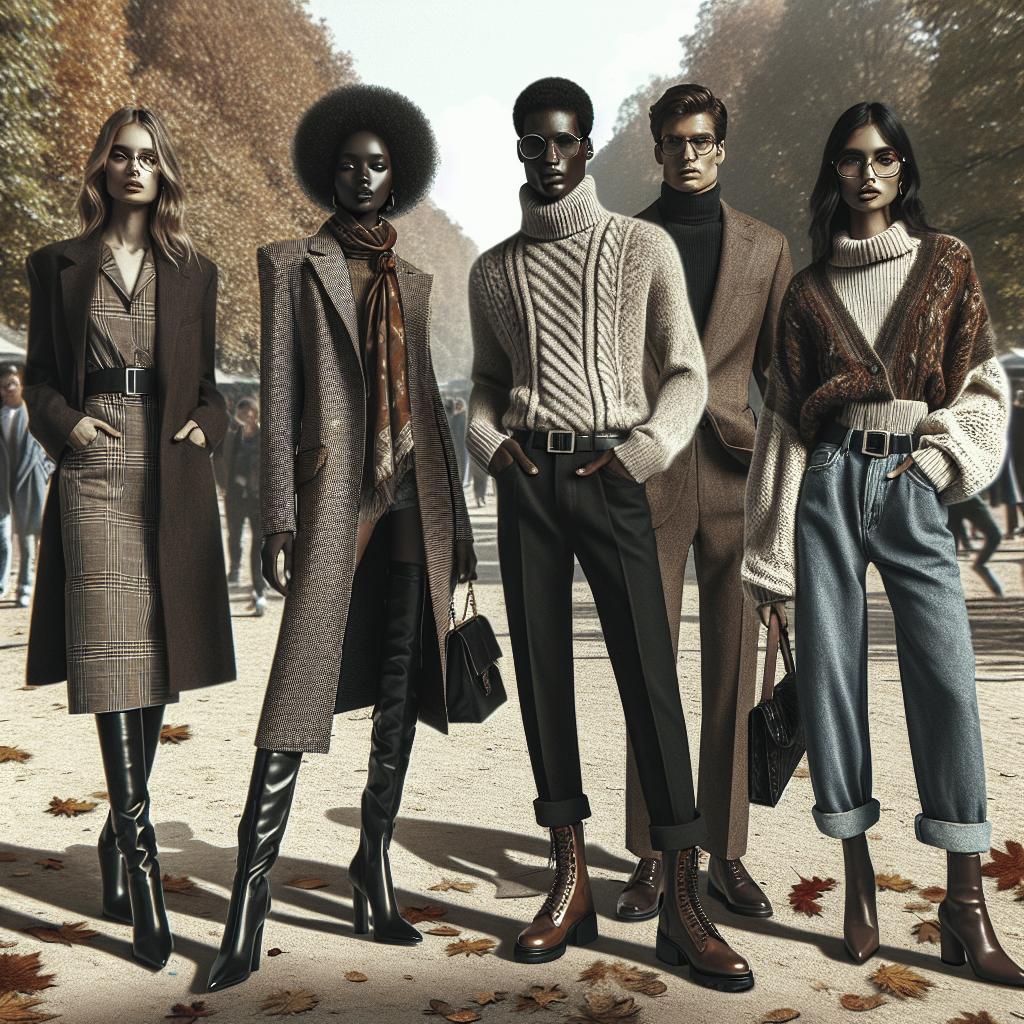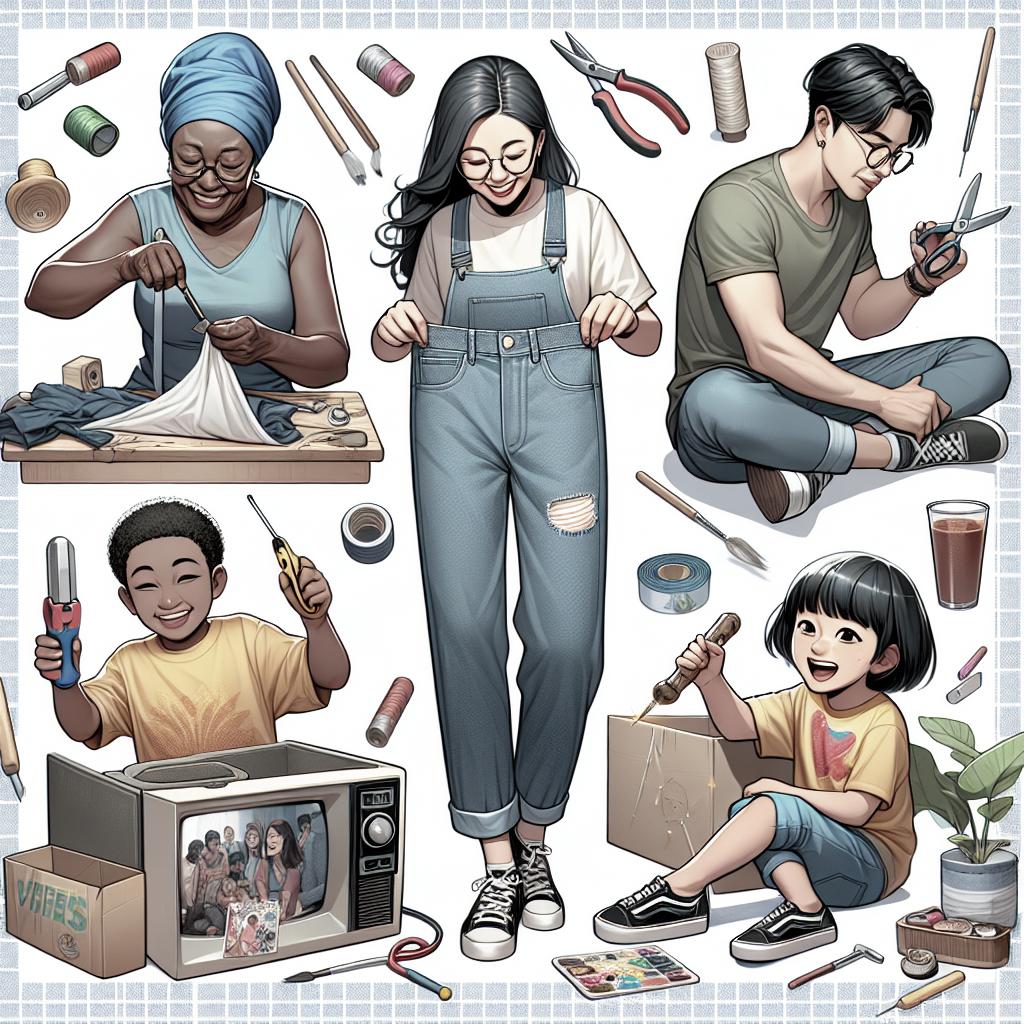“`html
Innovative Materials in Fashion Design
The fashion industry is undergoing a transformation as it embraces sustainable and innovative materials. In this blog post, we’ll explore 17 groundbreaking fabrics that are making waves in fashion design. These materials not only offer ecological benefits but also possess unique properties that make them stand out. From plant-based leathers to textiles made from fruit fibers, these innovations are setting new standards for eco-friendly fashion. Dive in as we discover the benefits and applications of each of these sustainable materials and how they are contributing to a more responsible and innovative fashion industry.
SUSTAINABLE FABRICS THAT ARE REVOLUTIONIZING THE FASHION INDUSTRY
The quest for sustainability in fashion has led to the development of a range of innovative fabrics. These materials are crafted from renewable resources, often using natural and biodegradable elements. Not only do they reduce the carbon footprint of production, but they also provide new functionalities and aesthetics that traditional fabrics cannot offer. As the demand for sustainable options grows, these revolutionary materials are proving indispensable to the modern fashion landscape.
WHY ARE THESE FABRICS INNOVATIVE AND SUSTAINABLE?
1) Apple leather
Apple leather is a biobased material created from apple waste left after producing apple juice. Developed in response to the need for eco-friendly alternatives to animal leather, it transforms what would normally be a discarded product into a luxury textile. It’s known for its versatility, soft texture, and durability, making it a desirable option for crafting shoes, bags, and apparel.
Unlike conventional leather, apple leather is entirely biodegradable and requires significantly less water and energy to produce. Furthermore, its production supports circular economies by reusing and repurposing waste, minimizing environmental impact and helping to close the loop in the production cycle.
2) Leaf leather
Leaf leather is an innovative material derived from the leaves of the teak tree. The leaves undergo a process that involves purification, dyeing, and conditioning, transforming them into a robust and flexible material. This eco-friendly leather substitute offers a cruelty-free and biodegradable alternative to traditional leather.
Aesthetically, leaf leather boasts natural patterns and a unique texture, giving each piece a distinctive look. Popular in the creation of accessories and bags, it provides a remarkable combination of beauty, strength, and environmental consciousness.
3) Vegea
Vegea is a plant-based material formulated from the waste of the winemaking process, notably grape skins, seeds, and stalks. Known for its flexibility and versatility, Vegea is a sustainable and cruelty-free alternative to leather. It can seamlessly integrate into various fashion designs, from footwear to furniture.
Beyond its aesthetic appeal, Vegea is waterproof, durable, and soft to the touch. Its creation supports both environmental stewardship and the upcycling of agricultural by-products, offering a sustainable solution in fashion’s quest to reduce waste and promote renewable materials.
4) Mushroom leather
Mushroom leather, or mycelium leather, is crafted from the root structure of mushrooms. Mycelium can grow rapidly, making it a highly sustainable material. This environmentally friendly leather alternative is biodegradable, durable, and flexible, offering designers a range of creative possibilities.
It stands out for its unique texture and natural look, lending an organic touch to fashion articles. Due to its sustainable production process and biodegradability, mushroom leather presents a promising future for eco-friendly fashion.
5) Piñatex
Piñatex is a natural textile made from pineapple leaf fiber, which is a by-product of the agriculture industry. The innovation lies in converting agricultural waste into a high-quality and versatile material used for shoes, bags, and more. This cruelty-free alternative to leather offers an appealing balance of flexibility, strength, and sustainability.
By utilizing waste materials from pineapple farms, Piñatex not only reduces environmental impact but also supports local communities, providing additional income streams for farmers without increasing the land, water, or fertilization demands.
6) Nettle fiber
Nettle fiber, derived from the fibrous stems of nettle plants, is being rediscovered as an eco-friendly and durable textile. Known for its strength and breathability, nettle fiber has been used historically in fabric production. Today, it is experiencing a resurgence as a sustainable and renewable resource.
As an alternative to cotton or synthetic fibers, nettle grows without pesticides or herbicides and requires minimal water. Its natural luster and texture make it an interesting choice for fashion designers looking to blend sustainability with aesthetic value.
7) Orange fiber
Orange fiber, made from the by-products of orange juice production, transforms citrus waste into innovative silk-like fabrics. Rich in cellulose, this fiber provides a soft and silky feel, making it suitable for luxury textiles.
Besides its eco-friendly credentials, orange fiber can be infused with essential oils from the fruit, offering skincare benefits and a delightful fragrance. This blend of functionality, luxury, and sustainability makes orange fiber a pioneering material in fashion.
8) Cactus leather
Derived from the nopal cactus, cactus leather presents a sustainable alternative to traditional leather. This material is not only organic but also exceptionally durable and abrasion-resistant. Its production process uses minimal water and energy, highlighting its environmental benefits.
The eco-friendly properties and the high resistance of cactus leather make it an ideal choice for items such as handbags and footwear. As consumers seek more sustainable choices, cactus leather continues to gain popularity in the fashion industry.
9) ECONYL®
ECONYL® is a regenerated nylon yarn produced from recovered fishing nets, fabric scraps, and industrial plastic waste. This recycled material is a standout due to its ability to be continually repurposed without degrading quality or strength.
ECONYL® supports the reduction of ocean waste and lowers dependency on new resources. Because of its versatility and enduring quality, it has been warmly embraced by leading fashion brands that are committed to circular design principles.
10) Parblex
Parblex is a biodegradable material derived from starch polymers and bacterial fermentation processes. Known for its transparency and glossy finish, Parblex is often used in accessories like glasses frames and buttons.
By using locally sourced bio-waste as a feedstock, Parblex reduces dependency on finite resources and provides a sustainable alternative to traditional plastics. Its innovative approach to materials science reinforces the possibilities of a circular economy in fashion.
11) Algae-based textile
Algae-based textiles leverage algae’s rapid growth and abundance to create a sustainable fiber with minimal environmental impact. These textiles utilize algae’s natural characteristics, offering UV resistance and anti-bacterial properties.
This exciting material not only contributes to more sustainable fashion but also showcases the potential of algae in solving broader environmental issues. Lightweight and versatile, algae-based textiles open new horizons for eco-conscious designers.
12) Mango leather
Mango leather is a biobased material derived from the by-products of mango processing. This ecological alternative to traditional leather utilizes food waste that would otherwise contribute to landfill, promoting a circular economy.
Durable and attractive, mango leather provides a soft and attractive finish ideal for a variety of uses in fashion design. Each piece tells a story of innovation, turning fruit waste into a luxury material with a reduced environmental footprint.
13) Lyocell (Tencel)
Lyocell, known commercially as Tencel, is a fiber made from cellulose found in wood pulp. Renowned for its softness, breathability, and biodegradability, Lyocell is produced using a closed-loop system that minimizes waste and emissions.
This sustainable textile is used extensively in producing breathable and comfortable clothing. Its sustainable credentials and luxury feel make Lyocell a popular choice for both designers and environmentally-conscious consumers.
14) Biofabricated leather
Biofabricated leather refers to lab-grown leather, where collagen – the main protein in animal skin – is cultured and grown outside of an animal. This cutting-edge material offers the same look and feel as traditional leather, minus the ethical and environmental downsides.
As biomaterials technology continues to advance, biofabricated leather represents a promising frontier in fashion innovation, reducing reliance on animal products and introducing new possibilities for sustainable fashion design.
15) Lotus fabric
Lotus fabric is a rare and eco-friendly textile derived from the fibers of lotus stems. Its production is labor-intensive, reflecting the unique properties and high value of the finished product. Often compared to silk, lotus fabric is soft, lightweight, and breathable.
This luxurious fabric is famous for avoiding creases and for its cooling properties, making it ideal for warm climates. As a plant-based textile, lotus fabric supports sustainable fashion choices without compromising luxury.
16) Spinnova fabric
Spinnova fabric is an innovative textile made from wood fibers using an entirely mechanical and environmentally friendly process, devoid of harmful chemicals. It stands out for its minimal water usage and low emissions.
The material is characterized by its soft texture and biodegradability, catering to an increasing demand for sustainable and natural fashion fabrics. By revolutionizing the way cellulose fibers are used, Spinnova offers a promising alternative to cotton and synthetic fibers.
17) Banana fiber
Banana fiber is obtained from the trunk of the banana tree and is known for its tensile strength and biodegradability. Historically used in traditional Japanese and Indian fabrics, it is now gaining popularity as a sustainable and versatile textile worldwide.
The fiber is naturally water and fire-resistant, making it suitable for a range of applications in fashion and beyond. As awareness of sustainable materials grows, banana fiber offers a compelling example of traditional practices meeting modern needs for eco-friendly textiles.
MAKE SURE TO PIN THE PHOTO BELOW TO SAVE THIS POST FOR LATER!

WANT MORE SUSTAINABLE BRANDS? VISIT OUR BRAND DIRECTORY!
Explore our comprehensive directory of sustainable brands that are leading the way with innovative practices. Whether you’re looking for ethical fashion or environmentally conscious producers, our directory has you covered for all your sustainable shopping needs.
RELATED READING YOU MAY ALSO ENJOY:
Check out more articles on sustainable fashion, material innovations, and eco-friendly practices that are shaping the future of the fashion industry. Our expertly curated content will keep you informed and inspired on your journey towards a more sustainable lifestyle.
“`


